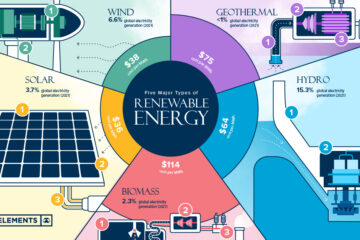Post Preview
Key Takeaways
- AI writing tools are changing how content is created.
- These tools can significantly increase productivity and creativity.
- Having knowledge about the advantages and disadvantages of AI writing tools is crucial.
Introduction to AI Writing Tools
Artificial Intelligence (AI) has permeated diverse industries, fundamentally altering how we conduct various tasks. Content creation is no exception, as AI writing tools revolutionize how we approach writing. These innovative tools open up new possibilities while presenting unique challenges that content creators must navigate.
These AI writing tools leverage advanced machine learning and natural language processing (NLP) algorithms to generate human-like text. They can interpret, analyze, and create text closely mimicking human writing. This article will delve into these cutting-edge tools, explaining how they work, their advantages, potential drawbacks, and their long-term impact on content creation.
What Are AI Writing Tools?
AI writing tools are software applications engineered to aid writers by automatically generating content. For example, an AI checker can assist in drafting emails, writing articles, and even creating sophisticated marketing copy, making the content creation process more efficient than ever. These tools utilize sophisticated machine learning and NLP techniques to understand the context, generate coherent sentences, and produce content that appears to be written by humans. From simple blog posts to in-depth research papers, these tools can handle various writing tasks, making them indispensable for writers, marketers, and businesses aiming to streamline their content creation processes.
The core mechanism behind AI writing tools involves training models on vast text datasets, allowing them to predict and generate words, phrases, and entire paragraphs. This ability to predict allows for the development of very cohesive and appropriate content within a specific context. Over time, the development of these algorithms has greatly enhanced the standard and dependability of AI-generated text.
Benefits of Using AI in Content Creation
- Increased Productivity: One of the most significant advantages of AI writing tools is their dramatic boost in productivity. These tools can draft complete articles in a fraction of the time it takes a human writer. This efficiency allows content creators to dedicate more time to strategic planning, creative thinking, and refining their work rather than getting bogged down by the initial drafting process.
- Enhanced Creativity: AI writing tools can act as collaborative partners, suggesting fresh ideas and perspectives that writers might not have considered. This capability boosts creativity and enables writers to explore new angles and approaches. For instance, AI can help generate unique story ideas, compelling headlines, and even innovative marketing copy that stands out.
- Cost-Effective: Employing AI for writing can significantly reduce operational costs. Businesses have the ability to decrease the amount of time and resources dedicated to content creation, which enables them to concentrate on other important aspects of their operations. The reduced need for extensive human resources in content generation translates to lower labor costs and increased financial efficiency.
Potential Drawbacks
While AI writing tools have considerable advantages, it’s essential to acknowledge their potential drawbacks. One significant limitation is that AI tools might need a more nuanced understanding of human emotions, culture, and context that human writers possess. This restriction may lead to content feeling detached or needing to profoundly connect with its target audience.
Additionally, AI-generated content risks becoming generic or repetitive, especially if the underlying algorithms need to be adequately diversified. This repetitiveness can lead to a lack of originality and creativity in the content. Furthermore, over-reliance on AI writing tools could stifle individual writers’ unique voice and style, making all content sound similar and less engaging.
Real-World Applications
AI writing tools have found applications across various sectors, from media and entertainment to marketing and academia. In journalism, companies leverage AI to quickly and efficiently generate news reports. This technology allows journalists to cover a broader range of stories and meet tight deadlines without compromising quality or accuracy.
Similarly, AI writing tools are used in the marketing sector to create personalized emails, social media posts, and advertising copy. These tools can analyze consumer data to generate content that targets specific demographics, enhancing the effectiveness of marketing campaigns. The ability to produce tailored content at scale makes AI writing tools highly valuable for businesses aiming to engage their audiences more effectively.
Case Study: AI in Academic Writing
AI writing tools are also making significant inroads into academia. Universities and research institutions are utilizing AI to assist in drafting scientific papers, compiling literature reviews, and summarizing research findings. According to a report by Nature, AI can process and summarize vast amounts of data, enabling researchers to focus on critical analysis and interpretation rather than getting bogged down by preliminary writing tasks.
This capability is particularly beneficial in fields that require synthesizing complex data sets, such as biology, medicine, and social sciences. By automating the more tedious aspects of academic writing, AI tools are helping researchers increase their productivity and contribute more effectively to their fields of study.
Future Prospects
The future of AI writing tools appears bright, with continuous advancements aimed at making these tools more intuitive, versatile, and contextually aware. As the underlying technologies, including machine learning and NLP, continue to evolve, we can expect AI writing systems to achieve even higher levels of sophistication.
Future developments in AI writing tools will likely enhance their ability to understand context, sentiment, and nuance. This progress will enable creating more targeted, engaging, and personalized content. Moreover, combining AI writing tools with other up-and-coming technologies like augmented reality (AR) and virtual reality (VR) could create new opportunities for immersive and interactive content development.
Conclusion
AI writing tools are undoubtedly changing the landscape of content creation. By understanding their benefits and limitations, content creators and businesses can better harness their potential to produce high-quality, engaging content efficiently and effectively. As we continue integrating AI into our workflows, balancing automation and the irreplaceable human touch in writing will be crucial.
Embracing AI writing tools while being mindful of their limitations will allow us to unlock new possibilities in content creation, ultimately leading to a more dynamic and innovative future for writers, marketers, and researchers alike.
Stay in touch to get more updates & news on Hintinsider!




